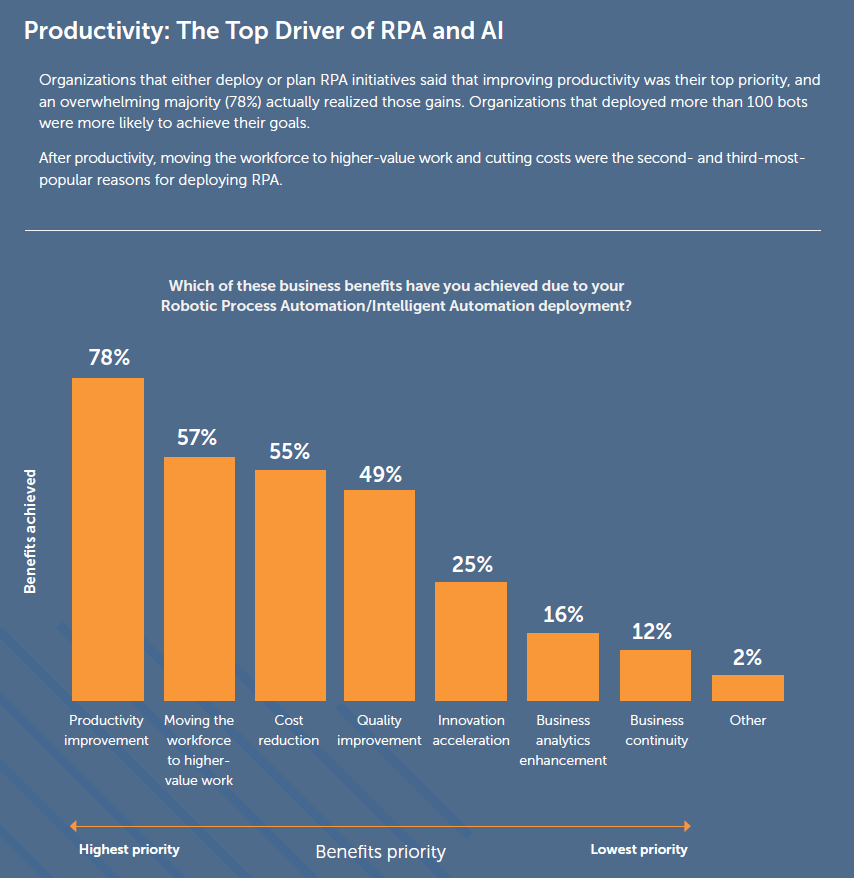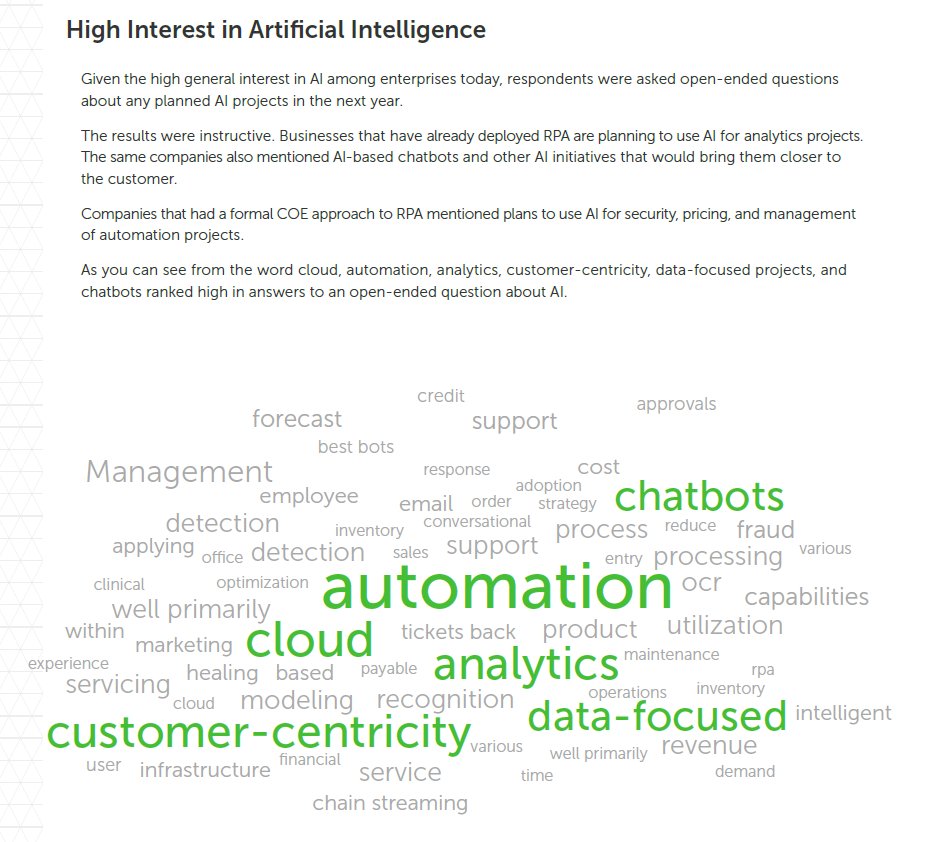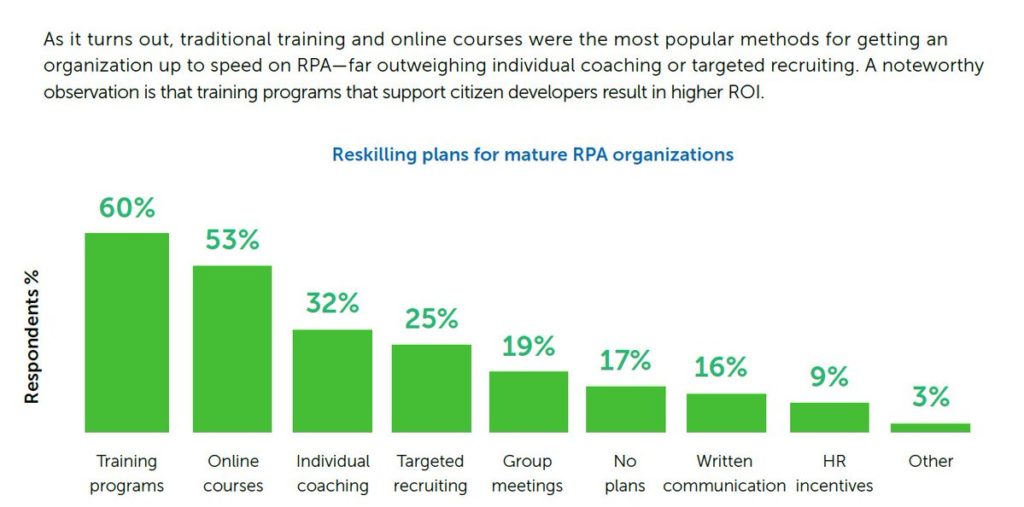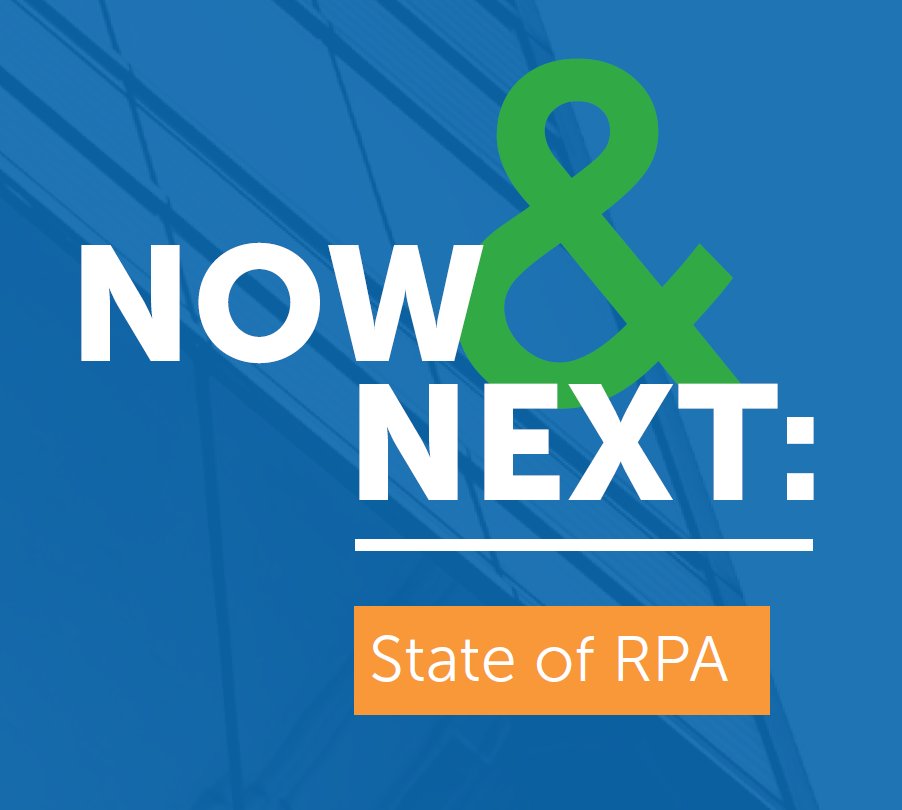When I was growing up, friends at school would occasionally ask me if my older brother and I were twins. We were not, though we looked twin-like! As I grew tired of answering that question, one day I decided to give a more thoughtful answer to the question (beyond a simple “No”). I replied: “Yes, we are twins. We were born 20 months apart!” My response caused the questioner to pause and think about what I said, and perhaps reframe their own thinking.
This story reminds me that two things may appear very much the same, but they may be found to be not so similar after deeper inspection and reflection. RPA and IPA are like that. Their similarities are different!
What are RPA and IPA? RPA is Robotic Process Automation, and IPA is Intelligent Process Automation. Sound similar? Yes, in fact, their differences are similar!
In the rest of this article, we will refer to IPA as intelligent automation (IA), which is simply short-hand for intelligent process automation.
Process automation is relatively clear – it refers to an automatic implementation of a process, specifically a business process in our case. One can automate a very complicated and time-consuming process, even for a one-time bespoke application – the ROI must be worth it, to justify doing this only once. Robotic Process Automation is for “more than once” automation. RPA then refers specifically to the robotic repetition of a business process. Repetition implies that the same steps are repeated many times, for example claims processing or business form completion or invoice processing or invoice submission or more data-specific activities, such as data extraction from documents (such as PDFs), data entry, data validation, and report preparation.
The benefits of RPA accrue from its robotic repetition of a well-defined process (specifically some sort of digital process with defined instructions, inputs, rules, and outputs), which is to be repeated without error, thus removing potential missteps in the process, or accidental omission of steps, or employee fatigue. The process must be simple, stable, repetitive, and routine, and it must be carried out the same way hundreds or thousands (or more) times. This robotic repetition of the process assures that the steps are replicated identically, correctly, and rapidly from one application to the next, thus yielding higher business productivity. Consequently, as organizations everywhere are undergoing significant digital transformation, we have been witnessing increases both in the use of RPA in organizations and in the number of RPA products in the market.
So, what about Intelligent Automation? IA refers to the addition of “intelligence” to the RPA – transforming it into “smart RPA” or even “cognitive RPA”. This is accomplished by adding more data-driven, machine learning, and AI (artificial intelligence) components to the process discovery, process mining, and process learning stages. IA incorporates feedback, learning, improvement, and optimization in the automation loop. The market and business appetite for IA is growing rapidly, particularly as more organizations are seeking to add AI to their enterprise functions and to step up the value derived from their process automation activities.
The pivot from RPA to IA right now has spurred Automation Anywhere, Inc. (AAI) to conduct a survey of businesses and organizations in numerous sectors and industries, to assess the current and future (Now and Next) state of RPA in the enterprise. AAI’s recently published “Now and Next State of RPA” report presents detailed results of that survey.
The AAI report covers these industries: energy/utilities, financial/insurance, government, healthcare, industrial/manufacturing, life sciences, retail/consumer, services/consulting, technology, telecom, and transportation/airlines.
The first part of the report addresses the “Now” – the present-day impact of RPA and IA – how organizations are deploying process automation, what their priorities are, how much are they investing in it, and what are the benefits being achieved. The “Next” part of the report probes organizations’ forward-looking strategies and goals over the next one to two years. Of course, both the “now” and “next” sections are affected and informed by the COVID-19 pandemic.
Some top trends from the report include:
- Cloud is becoming the platform of choice for RPA deployments. Cloud is top of mind for leaders everywhere, and that includes cloud migration and cloud security.
- Organizations are thinking big about RPA, with millions of bots already implemented by AAI customers. Some AAI customers have individually deployed tens of thousands of bots.
- The pandemic has rapidly increased demand for RPA, especially in customer-facing functions, such as call centers.
- Most organizations (63%) are deploying or scaling their efforts, while 27% are still evaluating RPA solutions, and 10% have no plans at this time.
- Spending on RPA is increasing, with an estimated doubling of the number of bots deployed in the next 12 months in most organizations who are already actively using RPA bots.
- Productivity improvement is the single most important driver for adopting RPA, IA, and AI.
- The average ROI from RPA/IA deployments is 250%.
- Interest in AI is high and growing, specifically in the areas of smart analytics, customer-centricity, chatbots, and predictive modeling. Many organizations are seeing a strong alignment of their AI and RPA (hence, IA) projects.
- The top barriers to adoption are (in order of significance): lack of expertise, insufficient budget, lack of resources, lack of use cases, limited ROI, organizational resistance, scalability concerns, and security concerns.
- Top use cases in the back office include finance (general ledger data reconciliation), accounts payable (invoice processing and payment), and HR (new employee onboarding).
- Top use cases in the front office include customer records management (including account updates), customer service (request handling and call center support), and sales order processing.
- RPA education and training are on the rise (specifically online training). This reflects the corresponding increase in interest among many organizations in data literacy, analytics skills, AI literacy, and AI skills training. Education initiatives address the change management, employee reskilling, and worker upskilling that organizations are now prioritizing.
- Organizations report an increased excitement for RPA/IA, an awareness of significant new opportunities for adoption, and a desire for more mature RPA – that is, intelligent automation!
There are many more details, including specific insights for different sectors, in the 21-page “Now and Next State of RPA” report from Automation Anywhere, Inc. You can download the full report here: https://bit.ly/3p0IZpJ. Download it for free and learn more how the robotic twinning and repetition of business processes is the most intelligent step in accelerating digital transformation and boosting business productivity.





